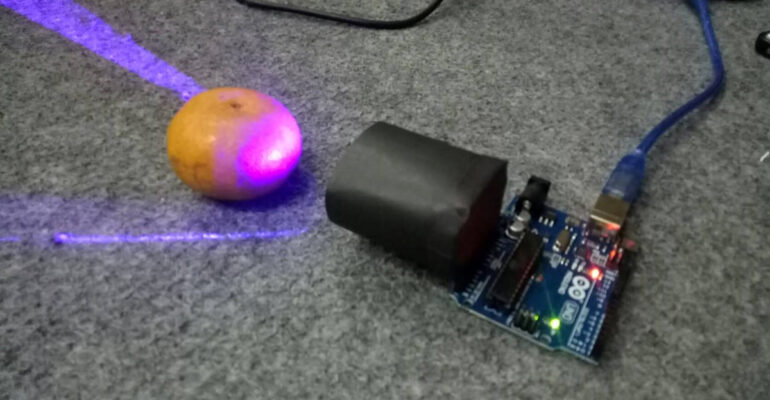SMURF, Application to Detect Orange Ripeness, Creation of IPB University Students

SMURF is a portable and up to date ripeness detection device for oranges. SMURF is a creation of IPB University students from Agricultural and Bio-system Engineering, Faculty of Agricultural Technology (Fateta). SMURF is created by Zhafran Ady Nugroho, Hari Wisesa and Krisetya Febriandi Salomo in Student Creativity Program in Karsa Cipta (PKM-KC). The team is advised by Dr. Ir. Slamet Widodo. SMURF is an abbreviation from Smart Ultraviolet Fluorescence.
SMURF can directly interact with a smartphone, which makes things easier for its user. Compared to the conventional ripeness device, its form is more practical and easier to use. SMURF’s shape is like a gun, which makes it easy to handle.
“SMURF’s mechanism principal is to capture wavelength emitted by an orange after it is exposed to UV LED light. The wavelength is then captured by a spectrometer. The data obtained is then processed with a specific equation which has been prepared, so the grade of the orange can be detected and displayed on a smartphone’s display,” explained Zhafran Ady Nugroho, the leader of the team.
Moreover, Zhafran said that this application is made because there are many oranges sold in markets without grade classification based on their ripeness or sweetness. There was also no technology which can be used by farmers to select quality oranges to fulfill the market’s demand.
With SMURF, farmers could harvest the oranges easier and sort them based on their quality. Besides that, SMURF can also be used by consumers while shopping for oranges in market.
“We found similar devices in the market, but they are too costly, and they use Near-Infrared (NIR), while SMURF uses spectrometer with high accuracy, but also lower price,” he said.
Zhafran hopes that this device can be used by orange farmers when sorting oranges to be sold, so that the quality of the fruits will match the market demand. Zhafran sees that the society is still using traditional method to detect orange ripeness, which is by observing the color and texture of the orange. “This method is not accurate to detect fruit ripeness regularly,” he added. (Ard)



